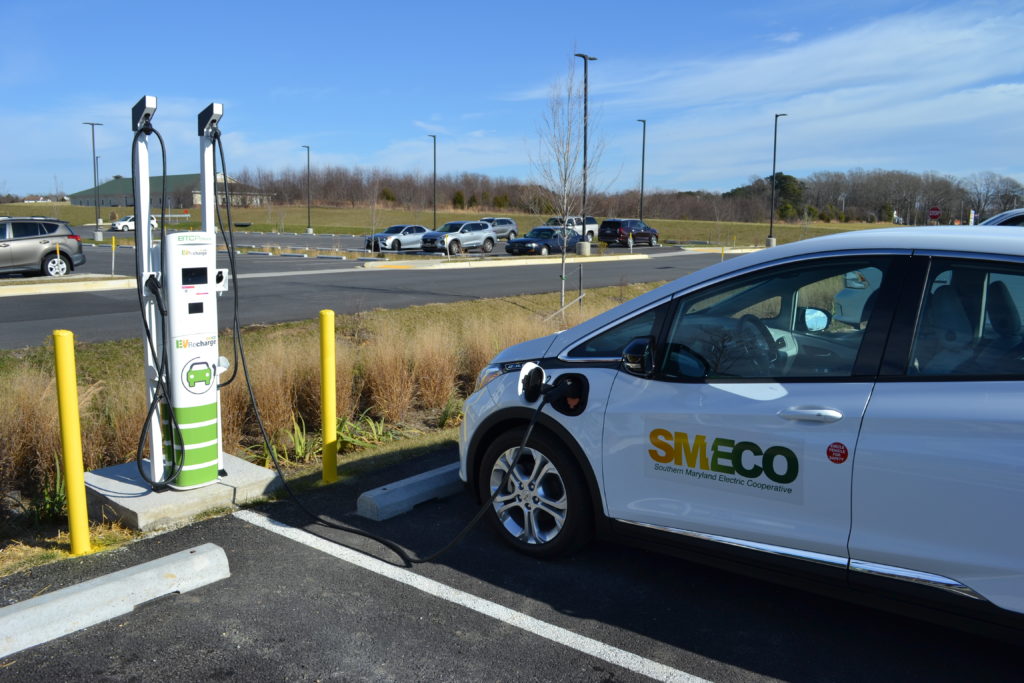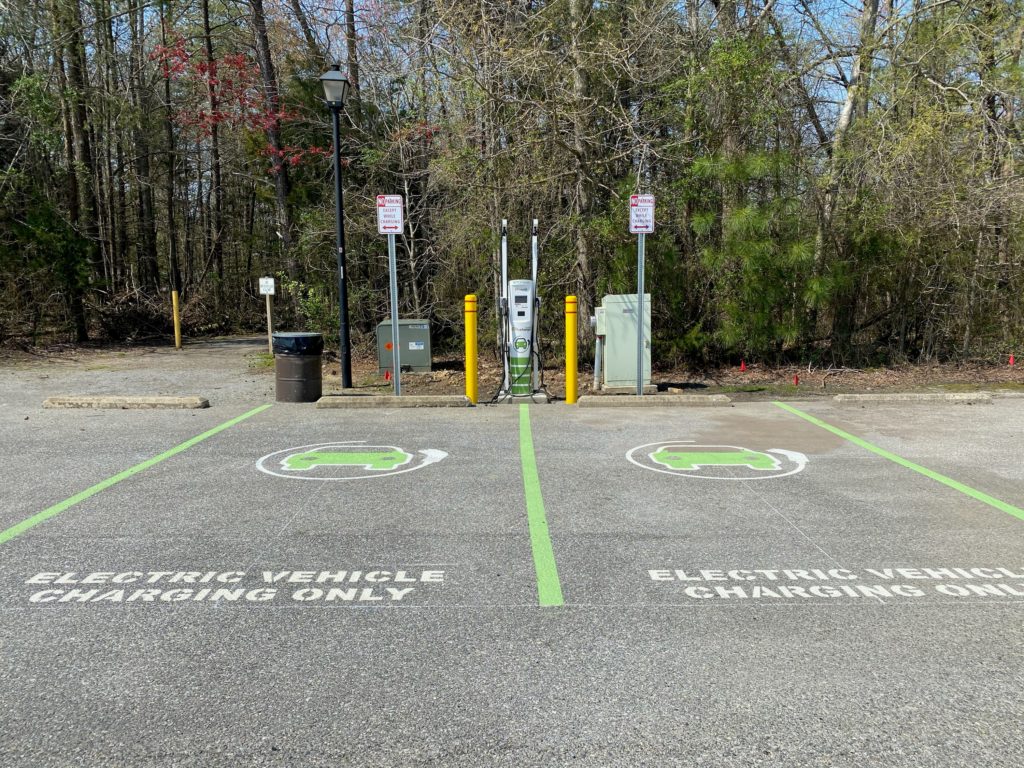
Southern Maryland Electric Cooperative is creating an electric vehicle charging network that will grow to 60 stations over the next four years as the co-op works to help the state achieve its ambitious EV goals.
By the end of May, the 141,000-member co-op will have installed eight charging stations at regional parks and public buildings in Charles and St. Mary’s counties, said Jeff Shaw, SMECO’s vice president of distributed energy and sustainability. It is also working with local officials in the other two counties it serves—Calvert County and Prince George’s County near Washington, D.C.—to find suitable sites there.
About two-thirds of the 60 total chargers will be Level 2, which typically take several hours to charge a vehicle. The remaining third will be DC-powered fast chargers, which can charge an EV to an 80% level in less than half an hour.
“We want to help our members get over any range anxiety they may have by providing them with convenient places to charge so they’ll feel free to move about,” Shaw said.
The state of Maryland has set a goal of having 300,000 electric vehicles on the road by 2025. SMECO has about 1,400 registered EVs in its service area, Shaw said. That number would need to grow to 18,000—more than 10 times the current amount— to meet the state’s target.
“We’re going to struggle as a state to get there, but that’s what goals are for—to push us forward,” he said.
The state Public Service Commission, which regulates SMECO and other utilities, requires that EV charging stations be placed at state, county or municipal government sites that are open 24 hours a day, seven days a week.
The co-op’s stations are at public locations that include regional parks, senior centers and libraries. One of the goals is to help boost tourism by bringing people from throughout the area to southern Maryland for recreation, Shaw said.

For example, he said, a regional park with a huge baseball/softball complex could attract families for tournaments.
“If they’re driving EVs, they’ll want to know if they can get some juice to go home after the games,” Shaw said.
In addition to environmental benefits, EVs have the potential to boost business for SMECO and other co-ops by dramatically increasing demand for electricity, Shaw said.
“It’s a load growth we haven’t seen since the advent of air-conditioning,” he said. “This is a tremendous opportunity, and we need to be thoughtful about how we approach it.”
Shaw’s advice for other co-ops interested in creating an EV charging network is to engage early with local officials and other stakeholders, ranging from environmental groups to automakers.
“Everybody wants to see this succeed, and we need to work together to make sure it does,” he said.
Read More:
Co-ops Create Electric Vehicle Charging Network in Upper Midwest
N.C. Co-ops Invest $1 Million in Electric Vehicle Charging Stations
Oklahoma Co-ops Are Helping Make EV Charging More Convenient
Erin Kelly is a staff writer at NRECA.